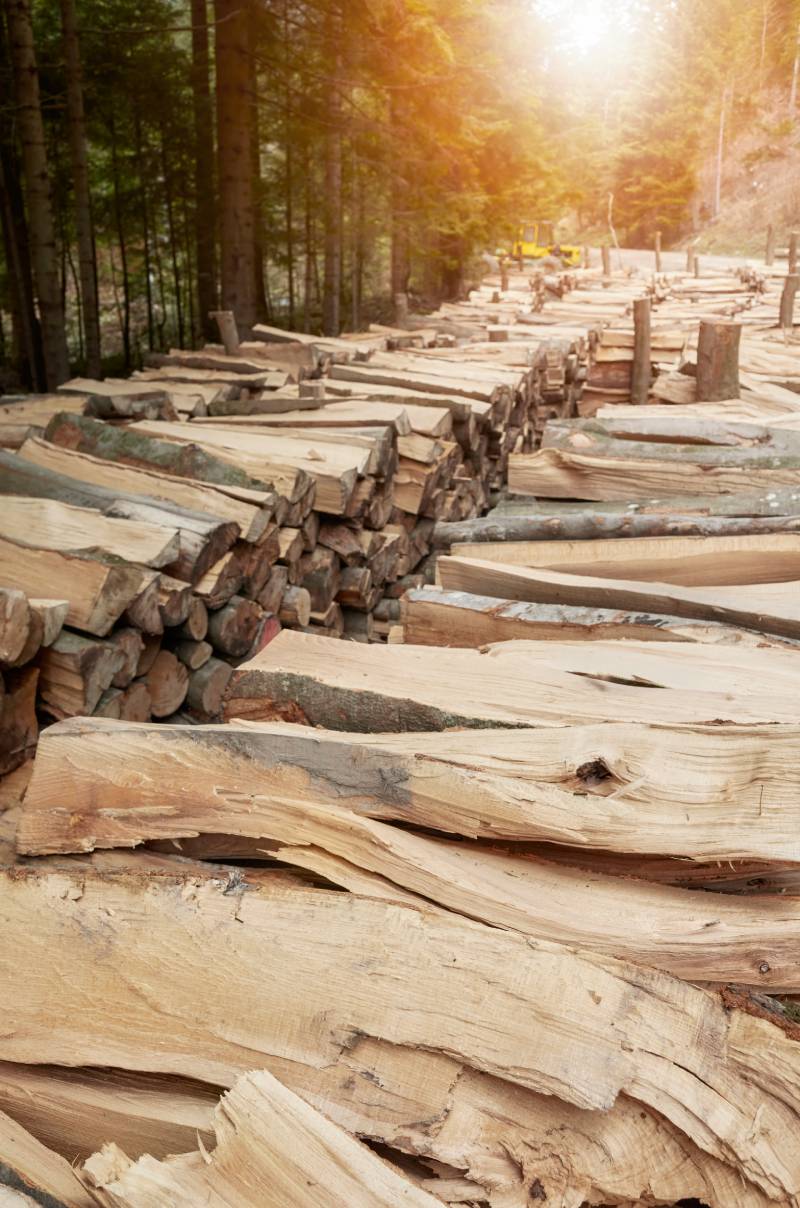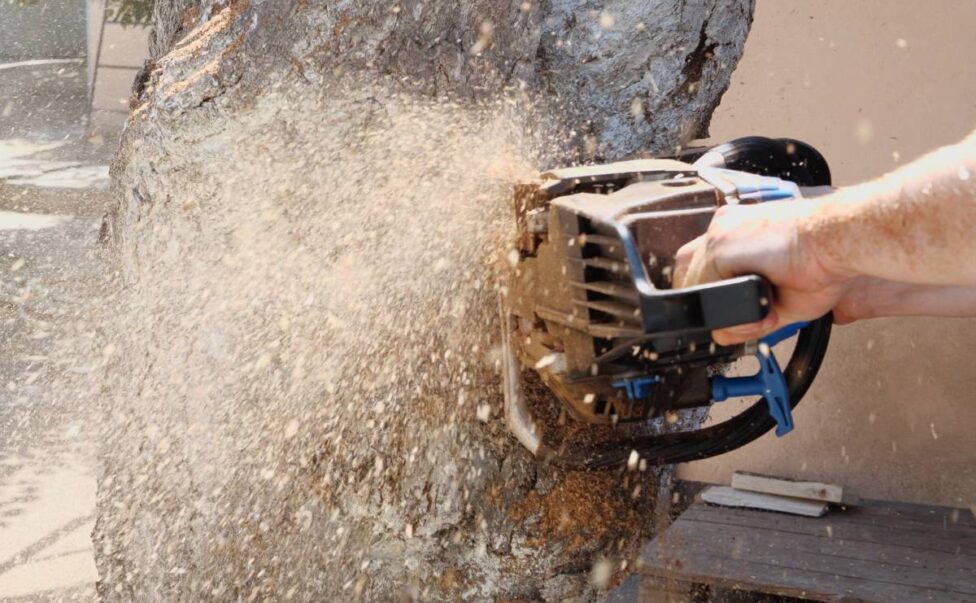When you should cut a tree down? What are some reasons to not cut down trees? What is the safest way to cut down a tree?
Embarking on the task of cutting down a tree is a responsibility that necessitates careful consideration and a commitment to safety. Whether driven by the need to address a diseased or encroaching tree, the decision to remove a natural giant requires a strategic approach.
In the following sections, we will explore the crucial aspects of tree cutting, focusing on the reasons for both removal and preservation and the paramount importance of executing this task with the utmost safety.
Understanding the nuances involved in these processes empowers individuals, from homeowners to seasoned arborists, to make informed and responsible decisions in the realm of tree management.
Trees are vital components of our environment, providing us with oxygen, shade, and a host of other benefits. However, there are times when it becomes necessary to cut down a tree. Understanding when and why to take this action is crucial for both safety and environmental considerations.
- Diseased or Dying Trees: One of the primary reasons to consider cutting down a tree is if it is diseased or dying. A tree that is infected with a harmful disease can pose a threat to other nearby trees, and the infection may spread rapidly. Additionally, a dying tree is more prone to falling, presenting a safety hazard. If you notice signs of disease, such as wilting leaves or decaying bark, it’s advisable to consult with a professional arborist to assess the situation.

- Structural Issues: Trees with structural problems, such as large cavities or significant leaning, may need to be removed. These issues can compromise the stability of the tree, making it susceptible to uprooting or limb failure. In such cases, a certified arborist can evaluate the tree’s structural integrity and recommend whether removal is the best course of action.
- Encroachment on Structures: Sometimes, trees grow too close to buildings, power lines, or other structures, causing potential damage. As trees mature, their root systems can damage foundations, and branches may interfere with power lines. To prevent costly damage and ensure the safety of structures, it may be necessary to remove a tree that is encroaching on these spaces.
- Invasive Species: Invasive tree species can outcompete native vegetation and disrupt the balance of ecosystems. If you have an invasive tree species on your property, removing it can help preserve the biodiversity of the environment. Always check with local authorities or environmental agencies to ensure compliance with regulations when dealing with invasive species.
- Dead or Hazardous Limbs: Dead or hanging limbs can pose a serious risk, especially during storms or high winds. If you notice dead branches or limbs that could potentially fall and cause harm, it’s advisable to have them professionally pruned or consider removing the entire tree if the risk is substantial.
- Personal Safety: If a tree is located close to your home or frequently used areas, and it poses a potential threat to personal safety, it may be necessary to remove it. This is particularly important if the tree is showing signs of instability, such as a noticeable lean.
The decision to cut down a tree should not be taken lightly, and it’s often best to consult with a professional arborist. Trees play a crucial role in our ecosystem, and responsible tree management ensures a harmonious balance between safety and environmental preservation. Always prioritize safety, seek professional advice when needed, and consider the broader impact on your surroundings before deciding to remove a tree.
Trees, often referred to as the lungs of our planet, play a vital role in maintaining ecological balance and supporting life. While there are circumstances that may warrant tree removal, it is equally important to recognize and appreciate the myriad reasons for not cutting down trees.
Let’s explore some reasons to preserve these green giants.
Environmental Benefits
Trees are nature’s air purifiers. Through a process called photosynthesis, they absorb carbon dioxide and release oxygen, contributing significantly to cleaner air. By retaining trees, we uphold a natural mechanism that mitigates the impact of greenhouse gases, fostering a healthier environment for all living beings.
Biodiversity Support
Trees provide habitats for countless species, from birds and insects to mammals and fungi. The diverse ecosystems that trees sustain contribute to overall biodiversity. Cutting down trees disrupts these habitats, leading to a decline in various plant and animal species. Preserving trees helps maintain the delicate balance of ecosystems and supports the web of life.

Soil Conservation
The root systems of trees play a crucial role in preventing soil erosion. They anchor the soil, reducing the risk of landslides and maintaining the fertility of the land. Cutting down trees can expose soil to the erosive forces of wind and water, leading to degradation and loss of arable land.
Climate Regulation
Trees are essential in regulating local climates. They provide shade, reduce temperatures through evaporation, and create microclimates that support a variety of plants and animals. The removal of trees can contribute to the urban heat island effect, where cities experience higher temperatures due to the absence of natural cooling provided by trees.
Water Management
Tree canopies act as natural umbrellas, intercepting rainfall and reducing the impact of raindrops on the soil. This helps prevent soil compaction and enhances water absorption. The intricate root systems of trees also play a role in maintaining groundwater levels. Cutting down trees can disrupt these water management functions, leading to issues such as increased flooding and reduced water quality.
Aesthetic and Recreational Value
Beyond their environmental contributions, trees add beauty to our surroundings and enhance the quality of life. Parks, forests, and green spaces offer recreational opportunities, improve mental well-being, and create aesthetically pleasing landscapes. Healthy trees can increase your home’s property value. In fact, a mature tree can add value between $1,000 and $10,000, according to the Council of Tree and Landscape Appraisers.
Economic Benefits
Trees contribute to the economy through various means, including the forestry industry, tourism, and property values. Sustainable forestry practices allow us to harvest wood products without compromising the long-term health of forests. Preserving trees ensures a continuous supply of these resources and supports local economies.
While cutting down a tree may be necessary for various reasons, it’s crucial to prioritize safety throughout the process. Mishandling this task can result in injuries and property damage. Whether you’re a seasoned arborist or a homeowner tackling a tree removal project, following these safety guidelines ensures a smooth and secure process.
- Assessment and Planning: Before grabbing your tools, conduct a thorough assessment of the tree and its surroundings. Identify potential hazards such as power lines, structures, or uneven terrain. Plan the direction in which the tree should fall, considering factors like wind and slope.

- Use the Right Tools: Employing the appropriate tools for the job is essential for safety. A chainsaw with a sharp blade, a safety helmet, goggles, ear protection, and sturdy work boots are basic necessities. If the tree is large, consider consulting with a professional or renting specialized equipment.
- Create a Safe Zone: Establish a clear work area around the tree. Keep bystanders, pets, and other workers at a safe distance. Mark the boundaries of the drop zone to ensure that no one is within the potential falling path of the tree.
- Check for Decay or Instability: Inspect the tree for signs of decay, disease, or structural instability. If the tree is compromised, it may be unpredictable during the cutting process. Consult with an arborist to assess the tree’s health and make informed decisions about the cutting strategy.
- Plan the Cut: Begin by making a horizontal cut, known as the notch or undercut, on the side of the tree facing the direction you want it to fall. This cut should be about one-third of the tree’s diameter. Following this, make a second, slightly higher, horizontal cut to create a wedge. The falling or backcut should be made on the opposite side, slightly above the bottom of the notch, leaving a small horizontal ledge.
- Felling the Tree: Before making the felling cut, ensure that you have a clear escape route planned. Make the cut carefully and avoid getting the chainsaw pinched. As the tree begins to lean, retreat along your predetermined escape path to a safe distance.
- Consider Professional Assistance: For large or complicated tree removals, seeking the help of a professional arborist is wise. They have the expertise, experience, and equipment to handle challenging situations safely. Professional services may also be required in urban areas where there are potential risks to nearby structures or power lines.
- Post-Cutting Safety Measures: Once the tree is down, exercise caution during limb removal and bucking. Securely brace the tree to prevent unexpected movement. Be aware of your surroundings, and avoid working beneath hanging limbs or unstable sections.
- Dispose of Debris Safely: Properly dispose of tree debris to prevent additional hazards. Use appropriate equipment such as chippers for smaller branches and logs. If the tree is diseased, consider contacting local authorities for guidance on disposal to avoid spreading diseases to other trees.
- Continuous Learning: Stay informed about the latest safety guidelines and techniques for tree cutting. Attend workshops or seek advice from professionals to enhance your skills and knowledge.
Remember, safety is paramount when cutting down a tree. By following these guidelines and exercising caution at every step, you can complete the task efficiently while minimizing risks to yourself, others, and the surrounding environment.
Conclusion
In the intricate tapestry of our environment, the decisions we make regarding trees ripple across ecosystems, shaping the landscape of our surroundings. As we navigate the delicate balance between removing trees when necessary and preserving them for their myriad benefits, the guiding principle remains unchanged: safety first.
The intricacies of tree cutting, from assessing a tree’s health to executing precise cuts, underscore the importance of knowledge and caution. By acknowledging the multifaceted roles trees play in our lives and adopting a mindset that prioritizes both safety and environmental well-being, we pave the way for a future where the act of cutting down a tree is a measured and responsible endeavour.

